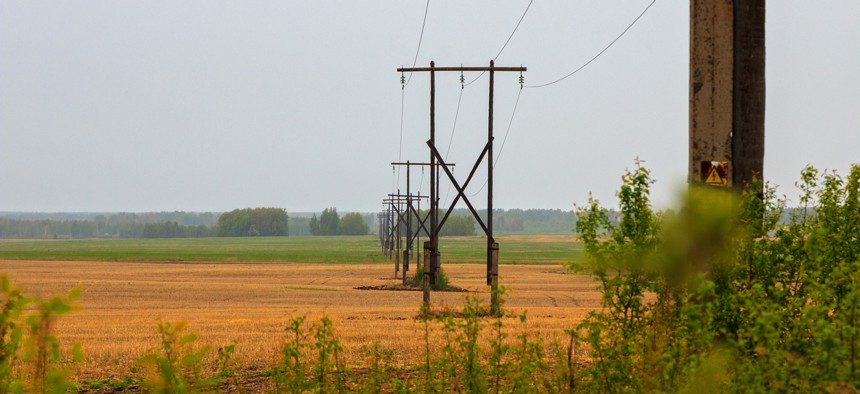Western Governors Are Leading the Charge on Broadband

istock.com/dmitry_7
COMMENTARY | In states across the West, governors are taking action to expand broadband access, pushing for more flexible funding, better mapping and faster infrastructure deployment.
The past year has highlighted the need for widespread deployment of high-speed broadband, but western governors were at work long before the pandemic to expand its availability across the region in support of rural economies and communities.
Building and maintaining broadband infrastructure in the West is challenging and costly. The challenge is exacerbated by the vast distances between communities, unforgiving terrain, and the difficulty of permitting and siting infrastructure across federal, state, tribal and private lands.
That said, this is a challenge that can be met if the federal government works with states to facilitate the deployment of broadband to underserved and rural areas. Western governors are doing their part and working hard to advance broadband priorities on multiple fronts:
Improved broadband coverage maps: Knowing where broadband is available can inform effective investment of public dollars. However, the current Federal Communications Commission (FCC) reporting protocols consider a census block “served” if a single residence in the block has access to broadband. This practice overstates broadband availability in larger, rural census blocks common in western states. Western governors' extensive outreach to federal agencies and Congress resulted in an important legislative victory in the passage of the Broadband DATA Act, which will require the FCC to update coverage maps with more granular service data.
Flexible funding strategies for schools and libraries: Rural schools and libraries play a critical role in providing broadband access. However, they struggled to access funding for connectivity upgrades until the 2014 launch of the FCC’s E-Rate Program. This pilot provided schools and libraries discounts to obtain internet services. Thanks in part to the governors’ advocacy, the FCC in 2019 permanently adopted the pilot funding program. Western governors’ also recently signaled support for another FCC Proposed Rule and its focus on promoting home connectivity solutions for students, noting that its funding for offsite "education connections and devices will allow students to continue learning in remote environments and provide needed assistance to disconnected areas."
Faster permitting for infrastructure deployment: Inefficient permitting on federal lands can slow broadband infrastructure deployment. Currently, for example, the Bureau of Land Management says it takes on average 257 days to process a communications site right-of-way application. That’s why western governors supported a U.S. Forest Service proposed rule to modernize and accelerate its permitting practices for broadband infrastructure. When the final rule was published in 2020, it included all the elements recommended by the governors—such as expediting requests for communications infrastructure projects in or on existing communications facilities.
Tribal connectivity: A 2020 FCC report estimated that 28% of those on tribal lands lack fixed, terrestrial broadband coverage, compared to 22% of Americans in rural areas. And a U.S. Government Accountability Office review of certain U.S. Department of Agriculture and FCC broadband programs found that, from 2010 to 2017, less than 1% of funding went directly to tribes or tribally owned providers. Western governors are urging federal agencies and Congress to pursue policy and fiscal opportunities to improve broadband connectivity on tribal lands. Options might include the creation of federal programs to promote partnerships between tribes, states and various broadband providers, as well as allocating a designated portion of federal broadband programs’ funding to support projects on tribal land.
In addition to these activities, the Western Governors’ Association is supporting other initiatives like the use of TV white spaces technology, which are unused portions of wireless spectrum that can provide broadband internet access, and the FCC’s Educational Broadband Service spectrum, which provides entities, including tribal Nations, access to unused spectrum to support rural connectivity efforts.
Many challenges remain to achieve the quality of broadband connectivity in the West necessary for its citizens to compete on a level playing field with the rest of the country. But if any group can make it happen, it’s the western governors.
Hear more about how regions across the United States are addressing broadband challenges at Route Fifty’s The Digital Divide event on April 27-28.
Jim Ogsbury is the executive director of the Western Governors’ Association. Learn more about the Western Governors’ connectivity work by reading and downloading WGA Policy Resolution 2020-08, Broadband Connectivity.
NEXT STORY: Using AI and data to make decisions faster





